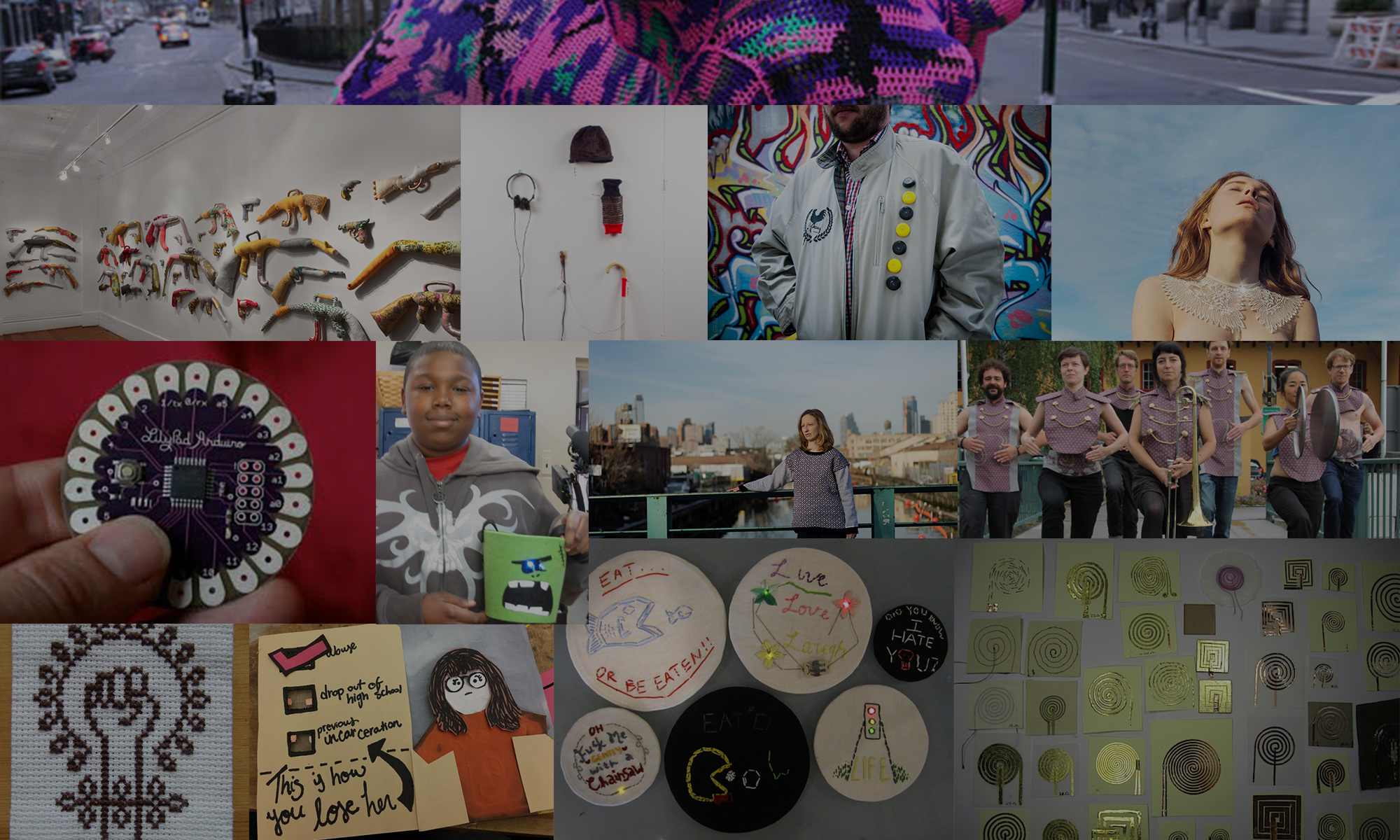We had a great kickoff workshop today! So many thanks to all the participants and illustrious helpers (yay Max and Alonso!) for coming out. Pictures are coming soon, but here are the slides and workshop outline for now:
WORKSHOP OUTLINE: ILLUMINATED SENSORSHIP
Learning Goals:
- Describe how a circuit, switch, and resistive sensor work.
- Build a basic circuit using conductive materials (copper tape, conductive thread, conductive fabric, velostat, Eeontex, and / or conductive yarn).
- Explore the history and relationship between activism, craft, and eTextiles.
- Receive an introduction to library of conductive materials and the properties of each.
Part 1: Setting the Context
- Introductions (10 min)
- Workshop agenda + goals
- Essential Questions:
- Different fields approach activism through different methodologies. How can we amplify messages of resistance by combining approaches, techniques, tools, and materials from craft, design, and technology?
What could eCraftivism be? How would you define it?
- Different fields approach activism through different methodologies. How can we amplify messages of resistance by combining approaches, techniques, tools, and materials from craft, design, and technology?
- Circuit + Swatch Demo (10 min)
- Quietly demonstrate how a variety of swatches work. Ask participants to silently observe the materials, interactions, and techniques.
- Afterward, explore a particular swatch through these questions, then compare to other swatches.
- Inspiration (10 min)
- Review examples from (1) craft history through an activist lens, (2) the emergence of eCraft and eTextiles, and (3) current projects related to the theme.
- Brainstorming: Collect + Cluster (20 min)
- What associations do you have with this word? Write one word or thought per post-it. One minute per word:
- Craft
- Technology
- Activism
- In small groups, cluster the post-its into related groupings. Give each category a name.
- Shareout from each group.
- What associations do you have with this word? Write one word or thought per post-it. One minute per word:
Break (20 min)
Part 2: Circuits + Traces
- Mini-Lesson: Make a paper circuit (20 min)
- Have each make a paper circuit and use to explain the following concepts:
- How does a circuit work? How does electricity flow through it?
- Parallel circuits: Adding more light
- Materials Introduction (5 min)
- What are the different conductive materials available to you?
Part 3: Switches + Sensors + Connections
- Soft switches (10 min)
- Momentary, toggle, tilt
- Sensors (10 min)
- Pressure, stretch, bend
- Connections (5 min)
- Why are connections important? What are different ways to create strong connections?
Part 4: Prototyping
- Prototyping (80 min)
- Principle: Radical self-expression. What do you want to say?
- Use the techniques you have learned to craft a paper or fabric circuit with a switch or sensor that conveys a meaningful message.
- Share out (20 min)
